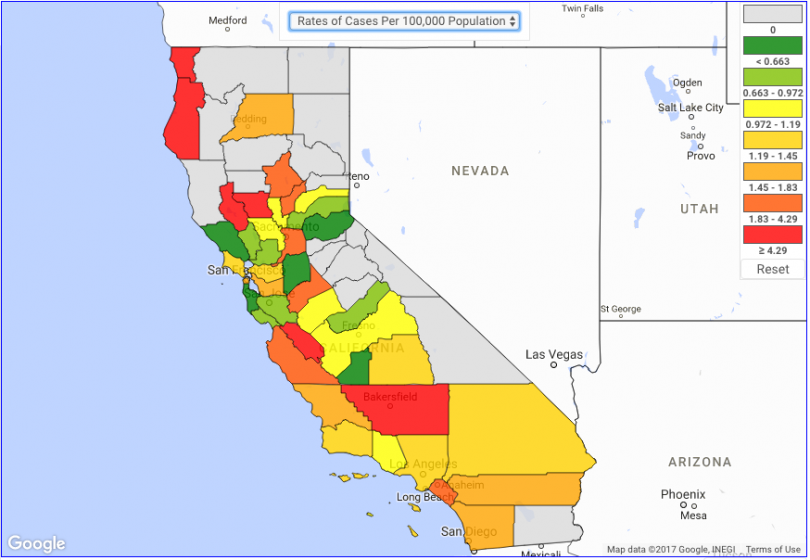The new Henry A. Wallace Police Crime Database is the first public, searchable web database that catalogs the arrests of state and local law enforcement officers. The database, created by Dr. Phil Stinson, a criminologist at Bowling Green State University (and former police officer), provides information on 8,006 arrests of approximately 6,596 individual officers in all 50 states. The arrests resulted in 13,623 charges.
The database includes data from the years 2005 through 2012. The year 2013 is scheduled to go live this fall. The database includes an officer crime heat map broken down by county, year of arrest, and crime type. According to Stinson, almost half of the crimes officers were accused of were violent.
Of the 13,623 charges, officers were accused of 1245 counts of simple assault, 717 counts of aggravated assault, 359 counts of forcible rape, and 578 counts of forcible fondling.
Officers were also charged with DUIs 1216 times, official misconduct 1019 times, drug crimes 580 times, filing false reports 507 times, and intimidation 487 times, and violating weapons laws 442 times.
The database fills a significant void in federal data collection. The feds do not collect comprehensive data on criminal officer misconduct. Moreover, data federal data that relies on the more than 15,000 local and state law enforcement agencies to send in numbers and information is often neither complete, nor uniform.
Louisiana, New Mexico, and South Carolina have the highest number of cases per capita (more than 4.71 per 100,000 population). In comparison, California was relatively low on the heat map scale. CA officers (as well as Nevada, Michigan, and several others) were responsible for between 1.14 and 1.89 cases per 100,000 residents.
Among California Counties, Kern, Humbolt, and several much smaller counties had more than 4.29 cases per 100,000, while counties like Placer, Sonoma, Santa Clara, Santa Cruz, and San Joaquin, were responsible for fewer than .972 cases per 100,000 residents.
The data does not break down which charges led to convictions, however.
In 2011, Stinson won a grant from the National Institute of Justice to fund his research.
Stinson set up thousands of Google alerts to find officer arrests. The criminologist uses media alerts, as well as court documents to capture the information provided in his interactive database.


No problem with that concerning those who ultimately don’t belong. Being charged is one thing but convictions are another. I don’t know too many LEO’S who tolerate criminals within their ranks.
Minus those who “slip through the cracks” and are exposed, Law Enforcement is a honest, thankless and a proud profession still desired by many boys, girls, men and women. The truest of them want the job for the purist reasons.
This guy’s “database” is a joke. He gets his data from “google alerts”!!!! So, we base statistics on what the media and GOOGLE reports????
I am going to start a “database” on extraterrestrial sightings and base it on media and Goggle alerts. In fact, in doing a quick analysis of Google data already on-line, I can see that there are more sightings in rural counties (per capita) than urban counties. Therefore we can drawing some conclusions like………………there are more extraterrestrial-believers in “red” counties than “blue” counties.
No wonder Trump carried rural America by an 80% margin!
Needs to go back to 2002. Some Rico Suave guy from SMPD was arrested for workers compensation fraud and grand larceny. Now he runs a shooting school bragging about how many people he’s killed.
Poli Sci Whatever is a class act.
Does this WASP former cop not get any credit? The bigger question would be “is any of his research true”? Should the researcher be discredited because his data is about bad cops?